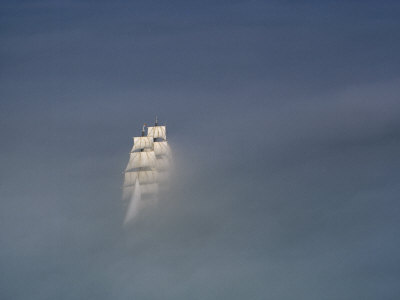pin
Banned
That is the question...

NATIONAL / POLITICS
War of words heats up over Senkaku run-ins
Beijing denies MSDF target-lock
BY REIJI YOSHIDA
STAFF WRITER
FEB 9, 2013
A war of words flared Friday between Japan and China over fire-control radar lock-ons by Chinese warships against Maritime Self-Defense Force elements last month, with Beijing dismissing the allegations and Tokyo calling China’s reaction “totally unacceptable.”
The two sides blame each other for raising tension over the incidents, one in which a Chinese frigate’s target radar locked onto an MSDF chopper and a Jan. 30 incident in which another frigate sailing close to an MSDF destroyer did likewise on the high seas near the Japan-controlled Senkaku Islands.
On Thursday evening, Beijing responded to an earlier protest and inquiries lodged by the Liberal Democratic Party government, dismissing allegations that the two Chinese frigates directed their fire-control radar, at the chopper and the destroyer, on two separate occasions because this account “does not match the facts.”
Government officials in Tokyo responded Friday, calling China’s reaction “totally unacceptable” and adding that, upon careful examination of radar data, they concluded the two frigates did engage their target-lock radar against the MSDF elements.
Chief Cabinet Secretary Yoshihide Suga called the incidents a “one-sided provocation by China” and demanded that Beijing “sincerely react to prevent a recurrence.”
Asked whether Tokyo will provide Beijing with any evidence to back up its claims, Suga said Prime Minister Shinzo Abe’s government will consider it while “carefully consulting with (domestic) defense authorities,” because such a move could substantially reveal Japan’s intelligence-gathering capacities.
Neither Suga nor the Foreign Ministry revealed any details of which parts, specifically, of Tokyo’s allegations are being challenged by Beijing.
However, the Chinese Defense Ministry stated on its website Friday that the Chinese navy did not engage its fire-control radar in either incident, although it conceded using radar for general purpose monitoring. It also said the root cause of security issues is the close surveillance by Japanese vessels of Chinese government ships near the Senkakus.
When a warship engages its fire-control radar to lock onto a target, it means it is preparing to fire or launch its weapons. Officials in Tokyo said the lock-ons created acute tension among the crew aboard the MSDF vessel, and slammed China’s actions as a provocation that could have easily escalated into a “very dangerous situation.”
The incidents also revealed for the first time the presence of MSDF destroyers and Chinese frigates around the Senkakus, which are known as Diaoyu in China and Tiaoyutai in Taiwan, which both claim the uninhabited islets.
Both China and Japan have deployed naval vessels more than 100 km north of the Senkakus to monitor each other’s movements since Tokyo bought three of the main islets in mid-September, effectively nationalizing the entire chain, Japanese media have reported.
But the Democratic Party of Japan government that preceded Abe’s Liberal Democratic Party-led administration, as well as Abe’s government, had not revealed MSDF warships were patrolling the East China Sea, in an apparent effort not to provoke Beijing any further.
However, Tokyo has now “found it necessary to appeal to the international court of public opinion and gain understanding of Japan’s position not just from our ally, the United States, but also from a wider segment,” Kyodo News quoted a Defense Ministry source as saying.
Japanese experts are now wondering if China’s apparent provocation is based on instructions from its senior leaders or was just a reckless maneuver by Chinese commanders or radar operators.
Bonji Ohara, a research fellow at the Tokyo Foundation and a former military attache at the Japanese Embassy in Beijing, said he believes the top Chinese leaders are now seeking to improve ties with Japan because their utmost priority is to focus on domestic economic reforms and thereby maintain the Communist Party’s rule.
On Jan. 25, incoming Chinese President Xi Jinping met with New Komeito chief Natsuo Yamaguchi in Beijing and mentioned the possibility of a holding a summit with Abe.
Xi reportedly said that “positive atmosphere” should be created to prepare for a possible summit meeting between the two leaders. Ohara maintained that Beijing has started sending indirect messages that it wants to improve its relations with Tokyo despite the festering Senkakus row.
But the intentions of those in China’s upper echelons are often misinterpreted or not well conveyed to the military, in particular because the top Chinese leaders, at least on the surface, need to maintain a tough posture toward Japan at all times to defend themselves against accusations of weakness at home, Ohara said.
“I think the senior Communist Party leaders control the Chinese military soundly as a whole,” said Ohara, a China expert and former MSDF captain. “But in many cases, the intent of the top party leaders is not correctly delivered to the bottom rungs of the military.”
Discipline aboard Chinese naval vessels is also not on par with the standards of Western navies.
Japanese officials appear to be well aware of the danger of accidental military clashes on the frontline of the Senkakus row, regardless of the intentions of the two countries’ leaders.
Katsunobu Kato, deputy chief Cabinet secretary and a close aide to Abe, has proposed setting up a hotline to improve communication and seek to prevent any maritime incident from escalating. Talks to set up such a line have been suspended since the long-standing Senkakus dispute flared anew in September.
Japan took control of the Senkakus in 1895, and only since the 1970s, after a report suggested the area may have potential gas and oil deposits, has China and Taiwan also staked claims.
Japan, U.S. to cooperate
WASHINGTON
Kyodo
Senior Japanese and U.S. officials said they will work closely together in dealing with the recent incidents in which a Chinese warships locked their fire-control radars on a Maritime Self-Defense Force destroyer and chopper, agreeing to share information and analyses.
The accord Thursday came as high-ranking foreign affairs and defense-related officials from both nations met at the U.S. State Department to discuss the development for the first time since Tokyo disclosed the news Tuesday.
The move is apparently aimed at sending a warning to China, which has become more assertive in its territorial claim to the Japan-administered Senkaku Islands.
Takeo Akiba, deputy director general of the Foreign Ministry’s North American Affairs Bureau, and Ro Manabe, deputy director general of the Defense Policy Bureau under the Defense Ministry, took part in the meeting. Leading the U.S. delegation was Jim Zumwalt, deputy assistant secretary of state for East Asia and Pacific affairs, and David Helvey, deputy assistant secretary of defense for East Asia.
Earlier Thursday, White House press secretary Jay Carney signaled Washington’s readiness to cooperate with Tokyo in addressing the development.
“It’s something that we have been monitoring regularly and engaging with our allies in the region about,” Carney told a daily briefing when asked to comment on Washington’s official position on the issue. “We have an important role as a Pacific power. And therefore, we’re very engaged in it.”
http://www.japantimes.co.jp/news/2013/02/09/national/beijing-denies-msdf-target-lock/#.URVMF6WCnHc

NATIONAL / POLITICS
War of words heats up over Senkaku run-ins
Beijing denies MSDF target-lock
BY REIJI YOSHIDA
STAFF WRITER
FEB 9, 2013
A war of words flared Friday between Japan and China over fire-control radar lock-ons by Chinese warships against Maritime Self-Defense Force elements last month, with Beijing dismissing the allegations and Tokyo calling China’s reaction “totally unacceptable.”
The two sides blame each other for raising tension over the incidents, one in which a Chinese frigate’s target radar locked onto an MSDF chopper and a Jan. 30 incident in which another frigate sailing close to an MSDF destroyer did likewise on the high seas near the Japan-controlled Senkaku Islands.
On Thursday evening, Beijing responded to an earlier protest and inquiries lodged by the Liberal Democratic Party government, dismissing allegations that the two Chinese frigates directed their fire-control radar, at the chopper and the destroyer, on two separate occasions because this account “does not match the facts.”
Government officials in Tokyo responded Friday, calling China’s reaction “totally unacceptable” and adding that, upon careful examination of radar data, they concluded the two frigates did engage their target-lock radar against the MSDF elements.
Chief Cabinet Secretary Yoshihide Suga called the incidents a “one-sided provocation by China” and demanded that Beijing “sincerely react to prevent a recurrence.”
Asked whether Tokyo will provide Beijing with any evidence to back up its claims, Suga said Prime Minister Shinzo Abe’s government will consider it while “carefully consulting with (domestic) defense authorities,” because such a move could substantially reveal Japan’s intelligence-gathering capacities.
Neither Suga nor the Foreign Ministry revealed any details of which parts, specifically, of Tokyo’s allegations are being challenged by Beijing.
However, the Chinese Defense Ministry stated on its website Friday that the Chinese navy did not engage its fire-control radar in either incident, although it conceded using radar for general purpose monitoring. It also said the root cause of security issues is the close surveillance by Japanese vessels of Chinese government ships near the Senkakus.
When a warship engages its fire-control radar to lock onto a target, it means it is preparing to fire or launch its weapons. Officials in Tokyo said the lock-ons created acute tension among the crew aboard the MSDF vessel, and slammed China’s actions as a provocation that could have easily escalated into a “very dangerous situation.”
The incidents also revealed for the first time the presence of MSDF destroyers and Chinese frigates around the Senkakus, which are known as Diaoyu in China and Tiaoyutai in Taiwan, which both claim the uninhabited islets.
Both China and Japan have deployed naval vessels more than 100 km north of the Senkakus to monitor each other’s movements since Tokyo bought three of the main islets in mid-September, effectively nationalizing the entire chain, Japanese media have reported.
But the Democratic Party of Japan government that preceded Abe’s Liberal Democratic Party-led administration, as well as Abe’s government, had not revealed MSDF warships were patrolling the East China Sea, in an apparent effort not to provoke Beijing any further.
However, Tokyo has now “found it necessary to appeal to the international court of public opinion and gain understanding of Japan’s position not just from our ally, the United States, but also from a wider segment,” Kyodo News quoted a Defense Ministry source as saying.
Japanese experts are now wondering if China’s apparent provocation is based on instructions from its senior leaders or was just a reckless maneuver by Chinese commanders or radar operators.
Bonji Ohara, a research fellow at the Tokyo Foundation and a former military attache at the Japanese Embassy in Beijing, said he believes the top Chinese leaders are now seeking to improve ties with Japan because their utmost priority is to focus on domestic economic reforms and thereby maintain the Communist Party’s rule.
On Jan. 25, incoming Chinese President Xi Jinping met with New Komeito chief Natsuo Yamaguchi in Beijing and mentioned the possibility of a holding a summit with Abe.
Xi reportedly said that “positive atmosphere” should be created to prepare for a possible summit meeting between the two leaders. Ohara maintained that Beijing has started sending indirect messages that it wants to improve its relations with Tokyo despite the festering Senkakus row.
But the intentions of those in China’s upper echelons are often misinterpreted or not well conveyed to the military, in particular because the top Chinese leaders, at least on the surface, need to maintain a tough posture toward Japan at all times to defend themselves against accusations of weakness at home, Ohara said.
“I think the senior Communist Party leaders control the Chinese military soundly as a whole,” said Ohara, a China expert and former MSDF captain. “But in many cases, the intent of the top party leaders is not correctly delivered to the bottom rungs of the military.”
Discipline aboard Chinese naval vessels is also not on par with the standards of Western navies.
Japanese officials appear to be well aware of the danger of accidental military clashes on the frontline of the Senkakus row, regardless of the intentions of the two countries’ leaders.
Katsunobu Kato, deputy chief Cabinet secretary and a close aide to Abe, has proposed setting up a hotline to improve communication and seek to prevent any maritime incident from escalating. Talks to set up such a line have been suspended since the long-standing Senkakus dispute flared anew in September.
Japan took control of the Senkakus in 1895, and only since the 1970s, after a report suggested the area may have potential gas and oil deposits, has China and Taiwan also staked claims.
Japan, U.S. to cooperate
WASHINGTON
Kyodo
Senior Japanese and U.S. officials said they will work closely together in dealing with the recent incidents in which a Chinese warships locked their fire-control radars on a Maritime Self-Defense Force destroyer and chopper, agreeing to share information and analyses.
The accord Thursday came as high-ranking foreign affairs and defense-related officials from both nations met at the U.S. State Department to discuss the development for the first time since Tokyo disclosed the news Tuesday.
The move is apparently aimed at sending a warning to China, which has become more assertive in its territorial claim to the Japan-administered Senkaku Islands.
Takeo Akiba, deputy director general of the Foreign Ministry’s North American Affairs Bureau, and Ro Manabe, deputy director general of the Defense Policy Bureau under the Defense Ministry, took part in the meeting. Leading the U.S. delegation was Jim Zumwalt, deputy assistant secretary of state for East Asia and Pacific affairs, and David Helvey, deputy assistant secretary of defense for East Asia.
Earlier Thursday, White House press secretary Jay Carney signaled Washington’s readiness to cooperate with Tokyo in addressing the development.
“It’s something that we have been monitoring regularly and engaging with our allies in the region about,” Carney told a daily briefing when asked to comment on Washington’s official position on the issue. “We have an important role as a Pacific power. And therefore, we’re very engaged in it.”
http://www.japantimes.co.jp/news/2013/02/09/national/beijing-denies-msdf-target-lock/#.URVMF6WCnHc


 Please Scroll Down to See Forums Below
Please Scroll Down to See Forums Below 



.jpg)






.png)














